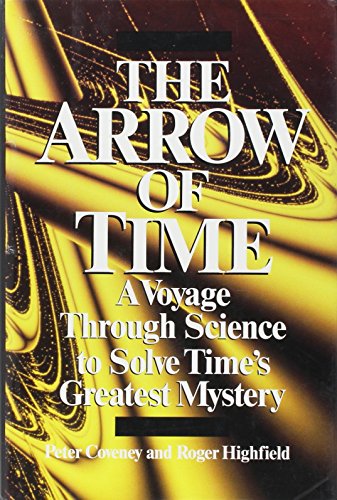Synopsis
Surveys every scientific discovery from Newton to the present to solve the mystery of time and offer a radical new theory about time running backward
Reviews
Seeking to reconcile the irreversibility of time--time's one-way "arrow " --with otherwise reversible laws of physics, science writer Highfield and University of Wales lecturer Coveney delve into biology, physics and mathematics. Their examination of time's place in the world of quantum mechanics, in particular, requires many diversions into recent theory and is presented so well that their solution to the paradox--plucked like a rabbit from the hat of chaos theory--suffers for lack of similarly strong proofs. The bold reinterpretations of relativity, dynamics theory and quantum mechanics, all in the spirit of intuitive modern science, are nonetheless stimulating and offer a more complex view of time than Stephen Hawking ' s A Brief History of Time, as well as an interesting proposal for its future.
Copyright 1991 Reed Business Information, Inc.
It is the ambition of all research, the authors quote 19th- century scientist Willard Gibbs, ``to find the point of view from which the subject appears in its greatest simplicity.'' However, it is the ambition of these same authors (Coveney: Physical Chemistry/Univ. of Wales; Highfield: science editor of the London Daily Telegraph) to demonstrate that simplicity doesn't get you very far in the real (macroscopic) world of time and space. Thus, the die is cast. The authors' aim in this not-so-easy treatise is to find objective bases for the irreversibility of time. Rather than discourse on varying interpretations of time in the manner of Stephen J. Gould in Time's Arrow, or assume the positivist stance of Stephen W. Hawking in A Short History of Time- -where he dismisses time as subjective--the authors make a case for uncertainty and ``dynamical'' chaos. Their approach is historical, pointing out that Newton's laws of motion, Einstein's relativity theory, and quantum mechanics all treat time as symmetrical--time can move forward and backward in the equations. But we know otherwise and so did 19th-century formulators of the second law of thermodynamics--entropy increases and isolated systems move inexorably toward thermal equilibrium. It is only with Prigogine and colleagues, recent computer modeling, and theories of chaos and catastrophe that the authors arrive at a state of the science in which they believe time's arrow is objectively demonstrated. All this may not mean a lot to people who take life, death, and decay as a given. However, for the intellectually curious there is much food for thought. In addition, the authors provide some fascinating examples of biorhythms and patterning in chemical and biological clocks, and in self-organizing systems from slime molds to the mammalian embryo. (Color and b&w photographs--not seen.) -- Copyright ©1991, Kirkus Associates, LP. All rights reserved.
Not to be confused with Richard Morris's Time's Arrows ( LJ 3/15/85) and Stephen Jay Gould's Time's Arrows, Time's Cycles ( LJ 3/15/87), this is the first American edition of a book originally published in Great Britain. Coveney and Highfield--a scientist and journalist, respectively--demonstrate how the everyday perception that time moves in one direction is consistent with advanced scientific theory. At the center of their theory is an intriguing interpretation of the second law of thermodynamics, which describes the forces of entropy. The authors show that this concept has broad relevance in such fields as cosmology, evolution, and the emerging science of chaos. Not for the merely curious, this book cites Stephen Hawking's A Brief History of Time ( LJ 4/15/88) and James Gleick's Chaos ( LJ 8/87) and will appeal to readers with the relatively high level of scientific sophistication of those books. Generalists will find the aforementioned book by Morris to be more approachable.
- Gregg Sapp, Mon tana State Univ. Libs., Bozeman
Copyright 1991 Reed Business Information, Inc.
"About this title" may belong to another edition of this title.
